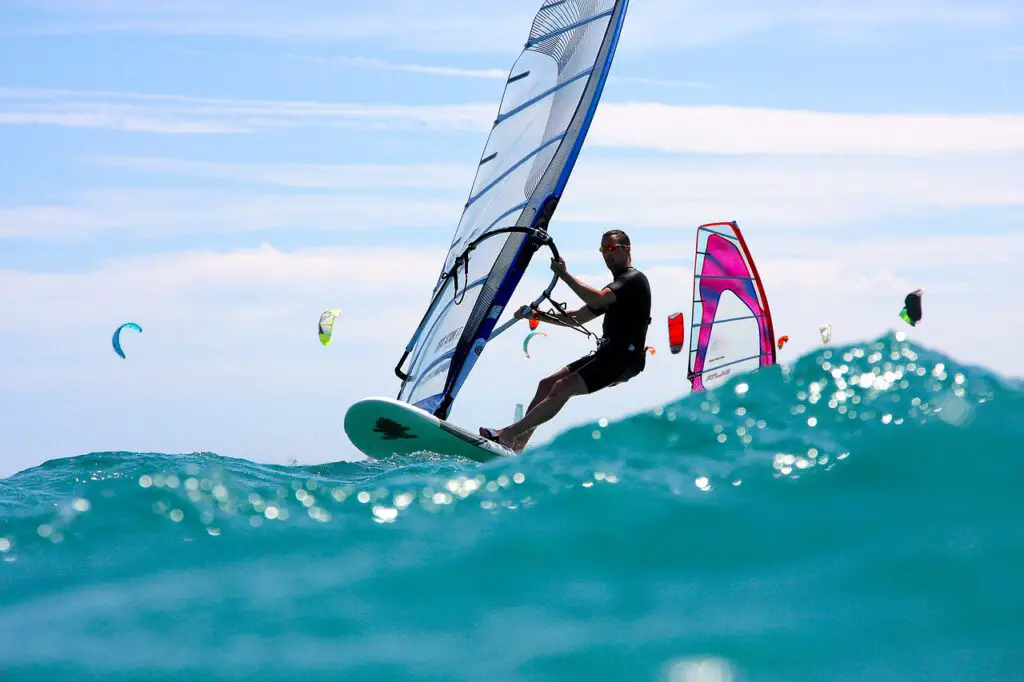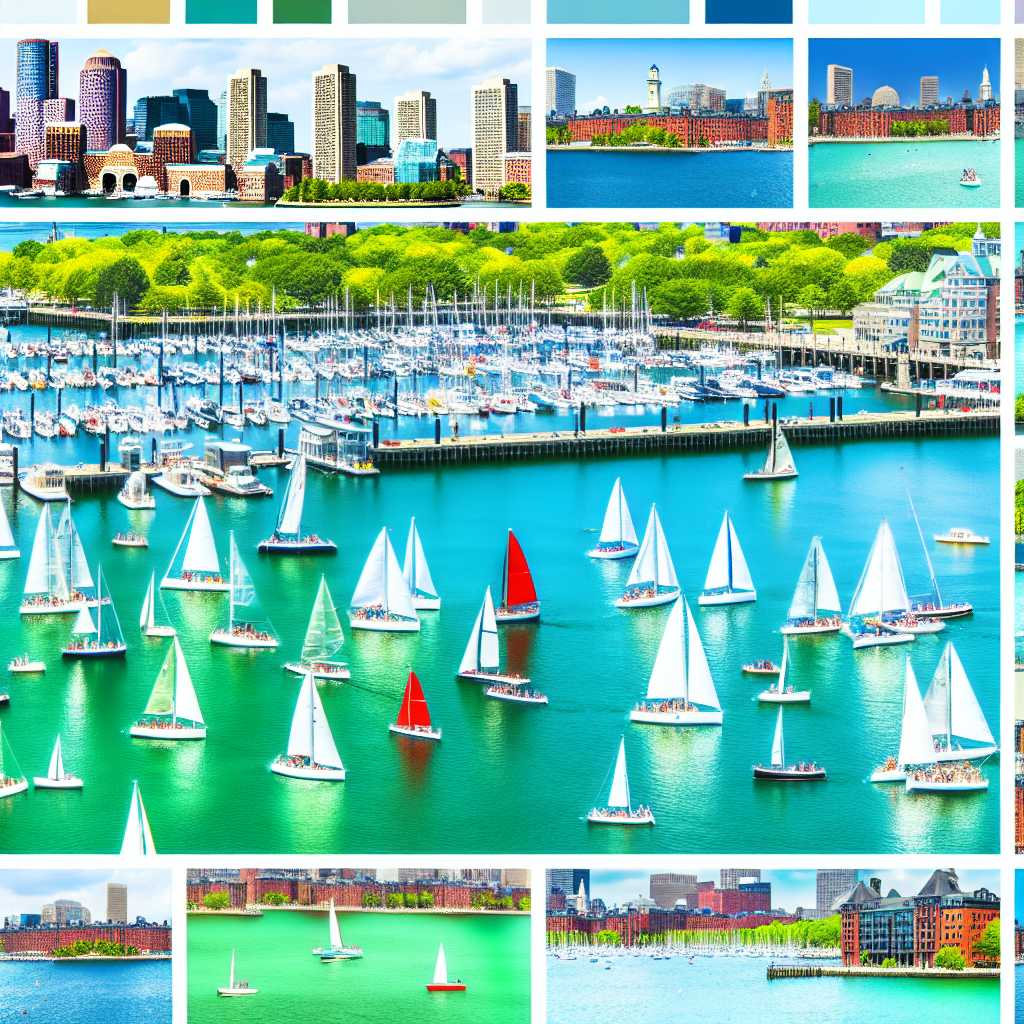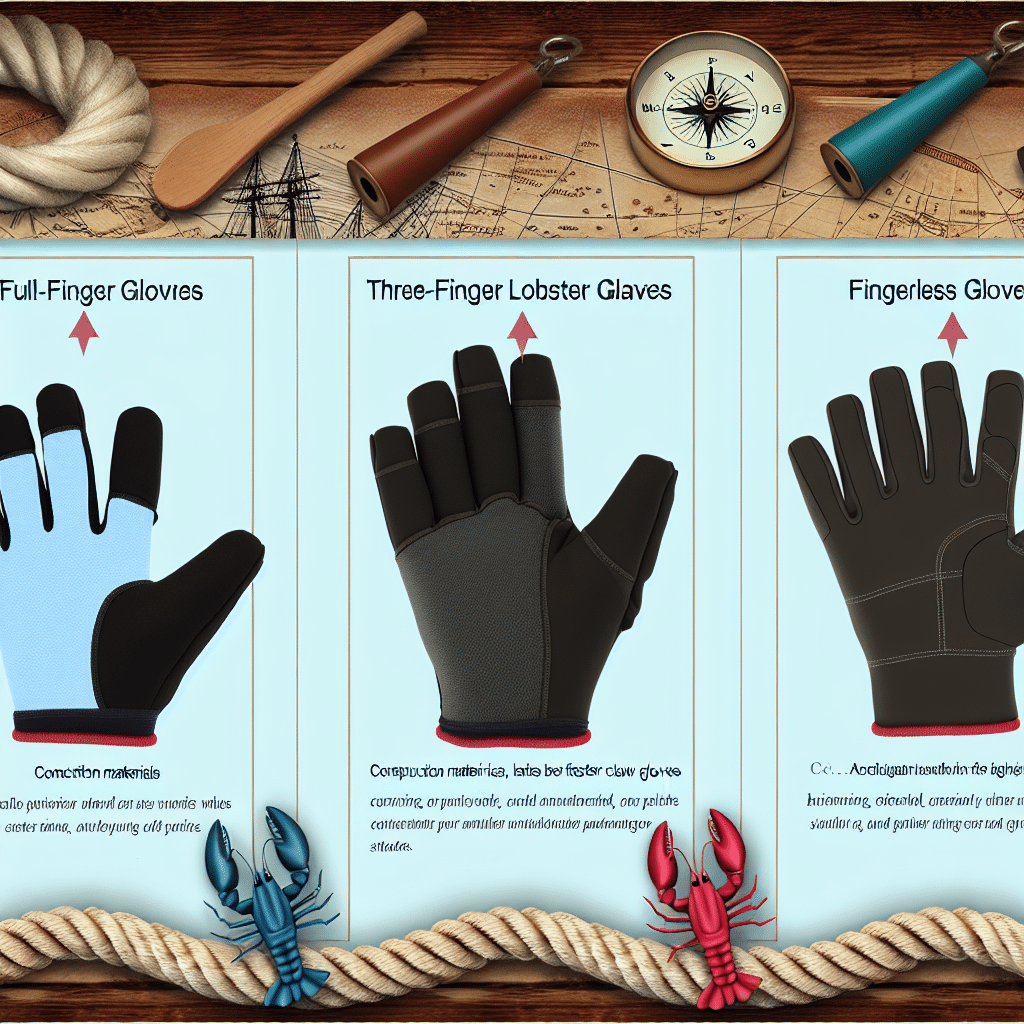Windsurfing is one of the fastest growing sports in the world. With boards getting fast, light and durable it’s no surprise that windsurfers are becoming more choosy over their sails. Here’s what to consider when buying your next sail…

Table of Contents
The Shape
Shapes vary but most windsurfing sails are designed to run flat when sheeted in or trimmed. Mainsails usually have full battens for rigidity and power, whilst freeride sails may be more soft-lined for ease of use. Different shapes give different performance characteristics depending on the conditions you’re sailing in. For example a big square luff masthead sail will give you a flatter run and upwind power, whereas a short-luffed, low aspect ratio race-style sail will allow increased pointing ability.
Windsurfing sails have changed considerably over the years from early designs which looked like small versions of traditional sloops to modern day wingsails. Here’s a guide to some of the more common types:
Masthead Rectangular Sails
These are the traditional type of windsurf sail. The mast section fits into pockets on either side and there’s usually a single downhaul for tensioning the luff. These sails can be ‘full battened’ or ‘semi full’ depending on how much rigidity you need.
Freeride Sails
These are a fast-growing sector as windsurfers look for more ‘adventure’ from their sports. More flexible sails have the advantage of being less power hungry and easier to handle when it’s light, but lack the rigidity and pointing ability of their full battened brethren.
Flat-cut Sails
These are aimed at the freeride windsurfer who wants to get planing in lighter winds. They have no camber so they run flat when sheeted but you lose some power and pointing ability because of it. They’re also usually less expensive than more traditional shapes.
Race Sails
Developed from the original mainsail shape, these are ideal if you want to get on the plane earlier in lighter conditions. They have a very low aspect ratio for increased pull and carry very little sail area so they’re more comfortable when going upwind too. With short battens inside, there’s no chance of them chattering and they can be sheeted closer than traditional mainsails.
Radial Sails
Designed for mainly planing performance, radial sails allow you to run flatter and deeper whilst still generating considerable power that makes going upwind very easy. They’re usually produced in high-tech materials such as carbon fibre for light weight and durability.
Having looked at some of the more common shapes, let’s look at other things to consider when buying your next sail.
Number of Battens
Battens add rigidity and help a sail hold its shape better in stronger winds. The downside is that they need additional pockets and downhauls for tensioning, which add to the weight and cost of a sail.
Sail Profiles
This refers to how much camber, or curve, a sail has throughout its length. Bigger profiles give more power and wind range but make them slower in light winds when there’s not much pressure on the leech. For example, a big profile masthead slalom or freeride sail will have a big leech but be quick in stronger winds.
Diagonal Stitching
This gives the sail extra shape by creating airfoils which are particularly effective when the sail is sheeted in. Diagonal stitching also helps reduce flutter, increase tensioning power and control how the sail flattens.
Materials
The materials used in construction have a significant impact on the weight and performance of many sails these days as manufacturers use new techniques to produce stronger, lighter and more resilient products for windsurfing. For example, ‘Carbon Skin’ is tough yet relatively lightweight and flexible. Carbon fibre is also extremely strong but stiffer materials like Kevlar are often used in the centre section of the sail to stop it becoming too floppy.
Construction
Almost all sails have a laminate construction with a sandwich of cloth between two sheets of Mylar film, which makes them lightweight and durable. The most common type is ‘cross cut’ where an X-shape pattern of cloth runs with the leech of the sail. This is cut-resistant and can give an increase in power as it’s better at maintaining a smooth curve when pressure is applied to the windward side.
Other options include ‘skived’ construction where slits are made into the outer layer of Mylar film, reducing weight yet still maintaining shape and stretch resistance.
There are also ‘full batten’ sails which don’t use flat panels like other types but instead consist of a series of narrow sections with overlapping full-length sections or stiffening ribs running down the leech., usually made from dyneema or kevlar.
OVERVIEW
Freeride Sails are aimed at the freeride windsurfer who wants to get planing in lighter winds. They have no camber so they run flat when sheeted but you lose some power and pointing ability because of it. They’re also usually less expensive than more traditional shapes.
Race Sails are developed from the original mainsail shape, these are ideal if you want to get on the plane earlier in lighter conditions. They have a very low aspect ratio for increased pull and carry very little sail area so they’re more comfortable when going upwind too. With short battens inside, there’s no chance of them chattering and they can be sheeted closer than traditional mainsails.
Crossover Sails offer good performance characteristics; they’re very powerful and fast upwind with a deep draft, but don’t point as well as most mainsails due to shallow curvature on the leech. However, cambered versions do exist so you can have the best of both worlds. They work particularly well with fast boards and are great for blasting round buoys.
Freeride Foil Sails are similar to their mainsail counterparts, low aspect ratio sails designed to plane earlier in lighter winds. They need minimal batten tension because of the angled battens which helps maintain an efficient shape despite less pressure on them; this is ideal if you like to sheet out and drive.
Cruising Sails are main-specific sails suited to small boards and cruising upwind in light winds. They have a greater camber than other loose footed sails which helps them take more wind; they also make sailing through chop easier because the battens get flatter due to this curvature. Cruising sails are usually sheeted pretty tightly because of the camber and they’re easier to tack than other loose footed mainsails.
Performance Sails often don’t have battens; instead, these high-tech shapes use cunning tapering, special shapes and stronger cloth for increased strength where it’s needed most. They can be sheeted more tightly thanks to the smooth, flat shape and give good power down-wind.
Cruising Foil Sails are versatile cruising sails with a high camber for good performance in light winds. They’re designed to handle gusts well and they’re easier to tack than most loose footed mains because of the battens and camber.
Crossover Sails are a good balance between speed and power; they’re ideal for race boards and great upwind but don’t point quite as well as mainsails due to the shallow curvature of the leech. Cambered versions do exist so you can have the best of both worlds. They work particularly well with fast boards and are great for blasting round buoys.
Freeride Sails are aimed at the freeride windsurfer who wants to get planing in lighter winds. They have no camber so they run flat when sheeted but you lose some power and pointing ability because of it. They’re also usually less expensive than more traditional shapes.
Freeride Foil Sails are similar to their mainsail counterparts, low aspect ratio sails designed to plane earlier in lighter winds. They need minimal batten tension because of the angled battens which helps maintain an efficient shape despite less pressure on them; this is ideal if you like to sheet out and drive.



